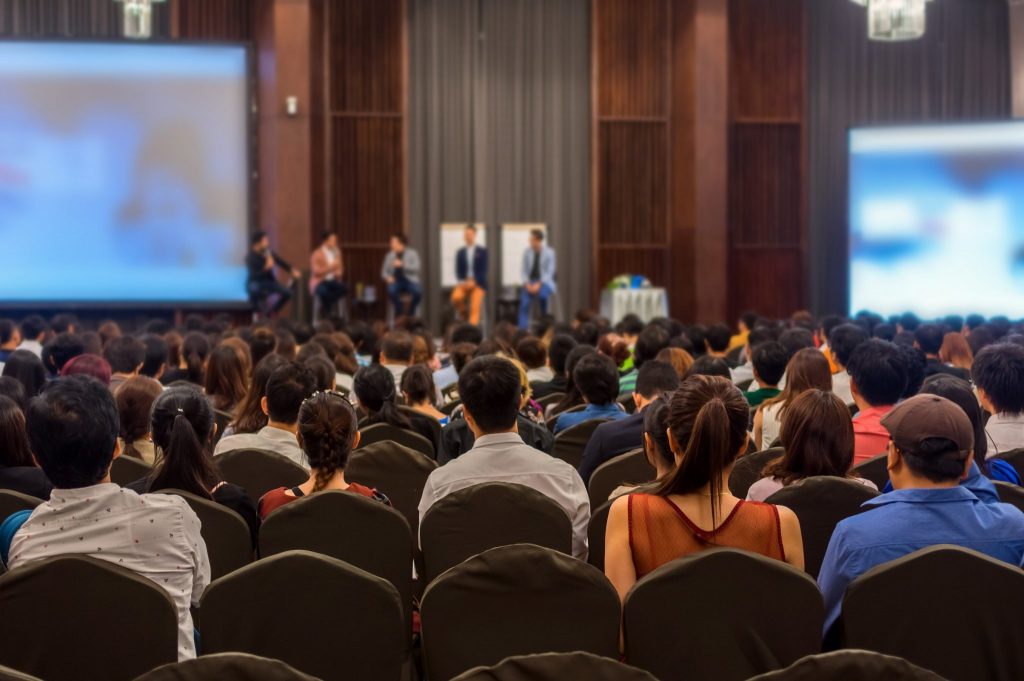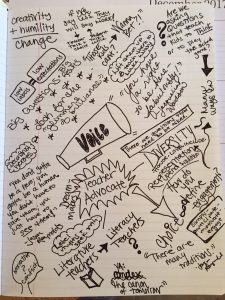How to Get the Most out of Education Conferences

It’s been a little over a month since I came home from this year’s NCTE convention, and I’ve reflected on and used my learning in new ways every single day.
But over the past several years of going to professional conferences, that hasn’t always been the case.
I’m sure that a large part of the NCTE carryover can be attributed to the quality of the conference. But I also think that it’s due to some specific, strategic moves I’ve taken on as a participant. As I attend sessions and then again after I return home, there are three moves I make to ensure I bring home more than just books.
When I encounter an uplifting or provocative idea, I make sure to spread it beyond the walls of the conference.
I attended more than one session after which friends and I would gush about how how it felt like “going to church.” Yes, of course, that’s a good thing because we felt a kind of spiritual revitalization, but it also got me thinking: Does this session just feel good, or is it actually doing some good? There was the worry that “going to church” might really be “preaching to the choir.”
Yes, the spiritual revitalization is good in its own right, but to move beyond preaching to the choir, I reflect on how to spread these ideas to people who aren’t already in “the choir.” I ask myself:
- Who would benefit from hearing this? How would it benefit them?
- Who else do I have in my building who would be part of “the choir”? How can I empower them to lead with me?
- What are my entry points? Are there pieces of this session that are shareable? Quotes or statistics that were particularly resonant?
I also make sure to step out of my comfort zone with conference sessions.
Yes, those “going to church” sessions are awesome and empowering and revitalizing, but sometimes it’s important to step out of your comfort zone and go to the sessions where you might not know so much already. Sometimes these are exactly the sessions that can push your instruction forward. So, when you’re browsing the convention book, look for session descriptions that make you think:
- That’s what so-and-so in my building is always talking about. I wonder if this would help me figure out what the fuss is about.
- This issue keeps popping up, and I’ve been doing my best to avoid it. Maybe this is a good way to put it back on my to-do list.
- I’ve never heard of this before, but it sounds like something that might complement what I’m already doing.
Remember to take notes–and then spend time reviewing them.

Sketching big takeaways on my airplane ride home helped me process pages of notes. Click the image to enlarge.
It probably goes without saying that you should take notes during a session. It doesn’t matter whether you use a trusty old paper-and-pen notebook like I do, or you have embraced digital note taking. Just make sure you’ve got a way to capture your thinking as it’s happening.
The same goes for cell phone cameras. Don’t be afraid to take pictures of slides and resources to save for later.
That saving it for later, though, is the most crucial part. After your last session has ended, make sure you take some time to go back through your notes, to start reflecting and synthesizing. I started to do this on the plane ride home, but found that I was just too wiped out to go too far with it. The next day, though, I returned and dug in a little further. It helped me to organize my reflection into a few categories:
- Resources I can use and share right now
- Big takeaways to remember forever
- Opportunities for learning
To seize those opportunities for learning, I ordered a few professional books, started searching some journal subscriptions, and updated my Christmas wishlist. With so many doors for learning opened to me, I know that I’ll be able to carry my conference learning with me for years to come.
 Megan Kortlandt (@megankortlandt) is a secondary ELA consultant and reading specialist for the Waterford School District. In the mornings, she teaches at Durant High School, and in the afternoons, she works with all of Waterford’s middle and high school teachers and students through the Curriculum, Instruction, and Assessment department. Every time Megan goes grocery shopping, her cart makes her appear to be exceptionally healthy, but don’t be fooled. The healthy stuff is all for her pet rabbit, Hans.
Megan Kortlandt (@megankortlandt) is a secondary ELA consultant and reading specialist for the Waterford School District. In the mornings, she teaches at Durant High School, and in the afternoons, she works with all of Waterford’s middle and high school teachers and students through the Curriculum, Instruction, and Assessment department. Every time Megan goes grocery shopping, her cart makes her appear to be exceptionally healthy, but don’t be fooled. The healthy stuff is all for her pet rabbit, Hans.
